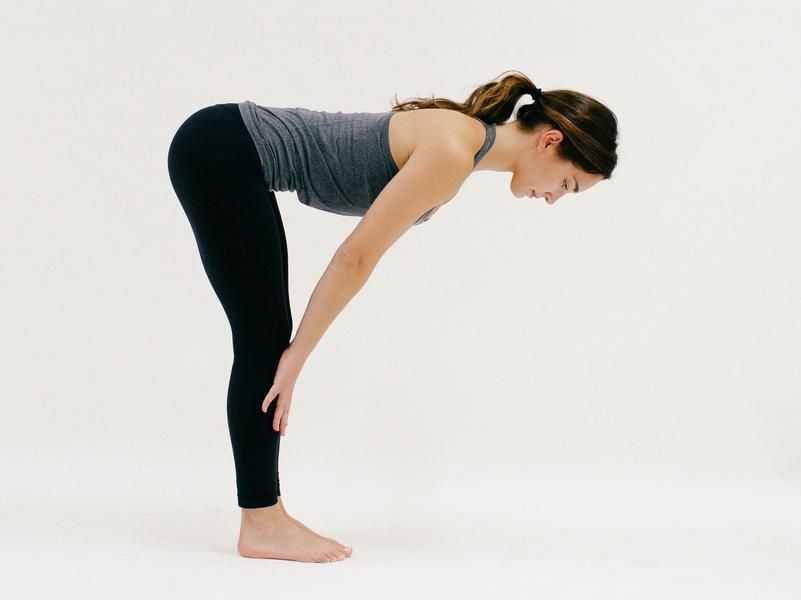
Some call it halfway lift, some call it Standing Half Forward Bend.
The Sanskrit name for this shape is Ardha Uttanasana (pronounced are-dah oot-tan-ahs-anna). Before we get into this pose, let’s take a look at the benefits of it.
When we understand the benefits of a certain pose, it might encourage us to do it differently. Or it might help us to realize that we could glean more from the shape when we fully understand it.
That’s one reason why yogis say they want to “deepen their practice.” To truly understand the purpose of what they are doing with their bodies and minds.
The Benefits of Standing Half Forward Bend Pose
The spine is lengthened in a halfway lift.The belly is pulling up and in, keeping the core engaged in the front and back body. First and foremost, this pose strengthens and lengthens the spine and all the muscles surrounding it. This is awesome to prevent & relieve lower back pain. It strengthens the neck when done properly, encouraging a healthy posture outside of the pose. As with most yoga postures, practitioners come from a variety of backgrounds, and this is just one variation. It’s up to you to find what feels good in your body while also keeping your body safe. Halfway lift can work more than just the spine. You can strengthen the legs, and increase spinal mobility depending on the postures you take.
Step-By-Step Instructions For How To Do Halfway Lift

- Halfway lift is typically followed by a forward fold. But there are multiple ways to get into halfway lift without using a full forward fold as the prelude. For the first part of this tutorial, let’s start in a forward fold because it seems to be the most common, especially in Surya Namaskar A or Sun Salutations.
- This is how you do standing forward fold. From a forward fold, you typically inhale into a halfway lift. Pulling the belly up and in, feeling it engaged (or squeezing it all in towards the spine). As you squeeze in, you lift the torso… wait for it… halfway! You want the spine to be long from the hips to the crown of your head. One long line! No sticking the head up to where your neck is cranked back. Unless that’s what you really want.
- This long line is important. It’s pretty much the whole point of a standing halfway lift, standing half forward bend (whatever you feel like calling it). That long line should look just like the long line created in plank pose. That’s why you typically step back from a halfway lift into plank, the spine is already lengthened and ready to step back.
- If you bend your knees in forward fold (pretty much everyone should), then you can also micro bend, or deeply bend, into the knees for halfway lift. The purpose of this pose is lengthening the spine, not locking out the knees. By the way, you should never lock out the knees, you hyper-extenders.
- Hands typically come to shins. Just soft hands gently pressing into shins. If you have space you can always extend arms down towards the floor, but watch your posture. You can also use blocks and touch fingertips to the blocks depending on how tall the blocks are versus how long your legs and arms are.
SHOP LEGGINGS:
Adding some variation…

- You can come into a halfway lift by stepping forward from a low lunge.
- To encourage your class to treat halfway lift as an actual pose rather than a transition pose, you can have them remain in halfway lift for the breath in. Fly the arms back while remaining in the shape for breath out. Fly the arms all the way forward for the breath in, etc. This is some intense core work, so be mindful of your own posture or the posture of the class as you hold this longer.
- My favorite is to float, breath-to-movement, from standing forward fold to standing half forward bend a few times before moving on. “Exhale forward fold, inhale halfway lift, breathe out fold, breathe in halfway, exhale step back into plank.” Something like that.
Do you love halfway lift as much as I do? Comment below, I'd love to hear from you!

























Leave a comment